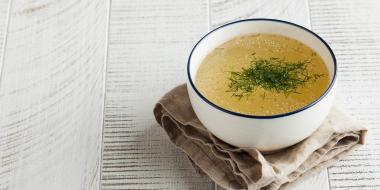One of the most common complaints I see in the smallest patients at my practice is earaches. The average uncomplicated earache will clear up within 24 hours. In the meantime, you can help alleviate much of the pain and discomfort, thus allowing your child to sleep more soundly, and support your little one’s healthy immune system to help prevent subsequent infections with a few simple hacks.
Ear Infections 101
When there is an infection in the middle ear, kids' underdeveloped anatomy along with the associated swelling of the Eustachian tube makes it difficult to drain the middle ear of fluid, often leading to—you guessed it!—a sore ear. While most uncomplicated ear infections will resolve themselves within a few days using the “watchful waiting” approach, some extra pesky ones may require antibiotics to fix the problem. Whether antibiotics are needed or not, having a few naturopathic tricks in your medicine cabinet can help.
Two types of ear infections
Otitis MediaAn infection of the middle ear caused by either bacteria or viruses and can occur in either one or both ears. The most common type experienced by children, symptoms include fever, chills, sore throat, sneezing, and general malaise.
Otitis Externa
Also known as swimmer’s ear, this infection can be caused by bacteria, viruses, or fungi. Symptoms include ear discomfort, itchiness, and discharge, along with the same symptoms as Otitis Media.
Top 5 Naturopathic Treatments for Earaches
Echinacea
Many of us already know that Echinacea is an effective immune system booster for the common cold, but it is also successful when used acutely and to prevent future ear, and other, infections. Depending on the age of the child, Echinacea can be found in various forms including teas, tinctures, chewable tablets, and throat sprays.
Garlic
Nature’s antimicrobial, raw garlic contains the compound allicin, which when infused into a carrier, such as olive oil, can be used as an ear oil to help alleviate uncomplicated infections. And along with enabling you to ward off vampires with your breath, eating raw garlic is also great as an internal antimicrobial to help fight infections!
Hydrotherapy
This technique uses contrasting water temperatures to alleviate some symptoms of earaches including congestion, headache, and fevers by stimulating optimal circulation within the body. Contrasting temperature showers, foot baths, and the beloved “magic socks” (cold wet socks worn against the skin with warm wool socks over top) are all great examples of hydrotherapy. It’s important to keep in mind that the water doesn’t have to be very hot or very cold. Warm and cool can be just as effective with children. Parental supervision is definitely a must for this one!
Multi-strain probiotics
Did you know that a large portion of your immune system resides in your gut? When your body is stressed, the levels of healthy bacteria become imbalanced, weakening the immune system and making it more difficult for it to do its job fighting infections. You can help restore that balance by incorporating a multi strain probiotic into your family’s routine. As there are many probiotics available, your naturopathic doctor can help you choose the best one for your child.
Homeopathic Medicine
For uncomplicated ear infections, there are many remedies that can be used to help treat the associated earache, including Aconite, Belladonna and Mercurius. However, choosing the right remedy depends on your child’s specific symptoms and is best left to the expertise of your naturopathic doctor who can help provide the most effective treatment. Children are very receptive to homeopathic medicine, making it a great adjunct to the above-mentioned therapies.
Please visit your healthcare provider if the earache doesn’t improve after 24-48 hours, or is accompanied by pus, swelling, repeated vomiting, a fever that lasts for more than 48 hours, pain, irritability, lethargy, hearing problems, rash, or if the child is younger than 6 months old.






